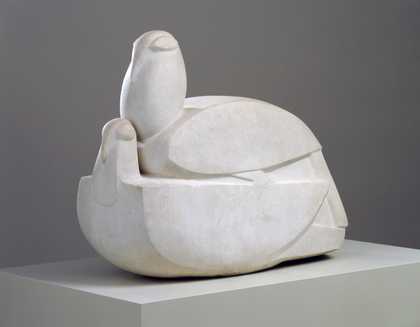This new approach was introduced by Constantin Brancusi from about 1906. Before that carved sculpture had always been based on a preconceived model. Often it was then actually carved by craftsmen employed by the artist. The marble sculptures of Auguste Rodin were made in this way.
An important aspect of direct carving was the doctrine of truth to materials (see also impasto). This meant that the artist consciously respected the nature of the material, working it to bring out its particular properties and beauty of colour and surface. Direct carvers used a wide variety of types of marble, stone and wood. They kept to simple forms which respected the original block or tree trunk. Surfaces were kept uncluttered by detail in order to expose the material itself, and were often carefully polished to enhance the colour and markings. The results were often highly abstract.
In introducing direct carving Brancusi brought about a revolution in the tradition of carved sculpture. After Brancusi, notable direct carvers were Jacob Epstein, Henri Gaudier-Brzeska, Barbara Hepworth and Henry Moore.

